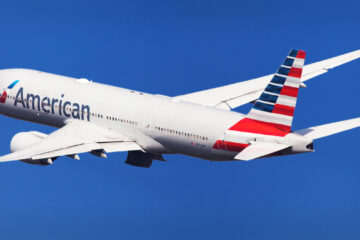The fast food giant has never been shy about leveraging it most famous sandwich.
For decades Restaurant Brands International (QSR) – Get Restaurant Brands International Inc Report has marketed Burger King as “The Home of the Whopper.”
Sometimes that’s actually an active advertising slogan and at other times it has shown up on the company’s signs, and even on the walls of its restaurants.
The Whopper literally launched the specialty hamburger market. It debuted in 1957, a full decade earlier than the McDonald’s (MCD) – Get McDonald’s Corporation Report Big Mac. Before
The Whopper, fast food menus were about doing a few things very well. In the after-Whopper world, limited-time offers (LTO), specials, and menu expansion became (albeit slowly) an ever more important part of the fast food game.
Burger King knows it has an iconic sandwich with The Whopper and although the chain never got people to sing its ingredients as McDonald’s did with the Big Mac, the company has kept its signature sandwich in the limelight.
One way Burger King has done that is by leveraging The Whopper name into other products. There’s the smaller Whopper Jr. and the Impossible Whopper, which is plant-based, which are menu staples.
But there are also a number of LTOs using the famous sandwich’s name including the Texas Whopper, the Angry Whopper, the Indy Whopper, the A1 Halloween Whopper, the Upside Down Whopper, and, of course, the Ghost Whopper.
Now, Burger King has a new take on its famous sandwich — meet the Twisted Whopper.
The Packaging Company/TheStreet
What’s a Burger King Twisted Whopper?
The Twisted Whopper, which comes in a number of variations uses a sweet sauce, instead of the company’s usual mix of ketchup and mayonnaise. It also has hot peppers to give the sandwich its trademark “spicy and sweet” taste.
Burger King has even built the marketing for its new sandwich — really a family of sandwiches — around the idea that sometimes people are “Struggling between two moods.”
When that happens, the company urges you to “find the right balance with a twist.”
Available in traditional beef, a chicken version, with a vegetable patty, and in a mutton version, the Twisted Whopper has been sold in India with the company not sharing any plans to bring it to the U.S.
But while many products on the Burger King menu in India may not make sense on an American menu, the Twisted Whopper, aside from the mutton version, looks like it would work anywhere in the world.
Burger King’s Plan to Rule the World
Burger King India is actually a separate company from Restaurant Brands International (RBI) that holds a master franchise agreement to grow the fast-food chain in India.
That agreement gives Burger King India the right to use everything on the Burger King menu while also developing items that cater to local tastes.
Burger King, in addition to India, wants to be a major player globally, and it’s well on its way.
“The success of our global development playbook is readily apparent when looking at Burger King’s international growth, which includes a doubling of the brand’s international store count since 2012 to nearly 12,000 locations and roughly 60% of the brand’s worldwide systemwide sales,” COO Joshua Kobza said during the company’s third-quarter earnings call.
Burger King, he acknowledged does have a ways to go.
“Despite this robust international development, Burger King still has only half the number of restaurants globally versus the leading competitor, including only a third of the number of restaurants in Asia-Pacific, where we are building a strong foothold,” he said.
“As a result, we continue to see Burger King as a significant growth engine, and based on our current pipeline, we expect it to be the largest contributor to our net restaurant growth for the foreseeable future,” he said.
To make that growth happen, Burger King uses the same model it does in India using a master franchisor and allowing that partner to tailor the menu for local tastes.
“Developing new restaurant business around the world is a key foundational strength of our team, and we are joined in our efforts by an exceptional network of master franchise partners who have the experience, local expertise, track record, and capital to invest,” Kobza said.
That has led to a lot more meat-free products appearing on the menu in India. It also gives RBI another source of idea development. Americans may not want mutton instead of hamburger, but they might like one of Burger King India’s vegetable-based offerings or the Twisted Whopper.
“We seek our partners who share our vision for building out our brands to their full potential in end markets, have the capital resources to do so, and have talented local management teams to execute on that vision,” he said.


